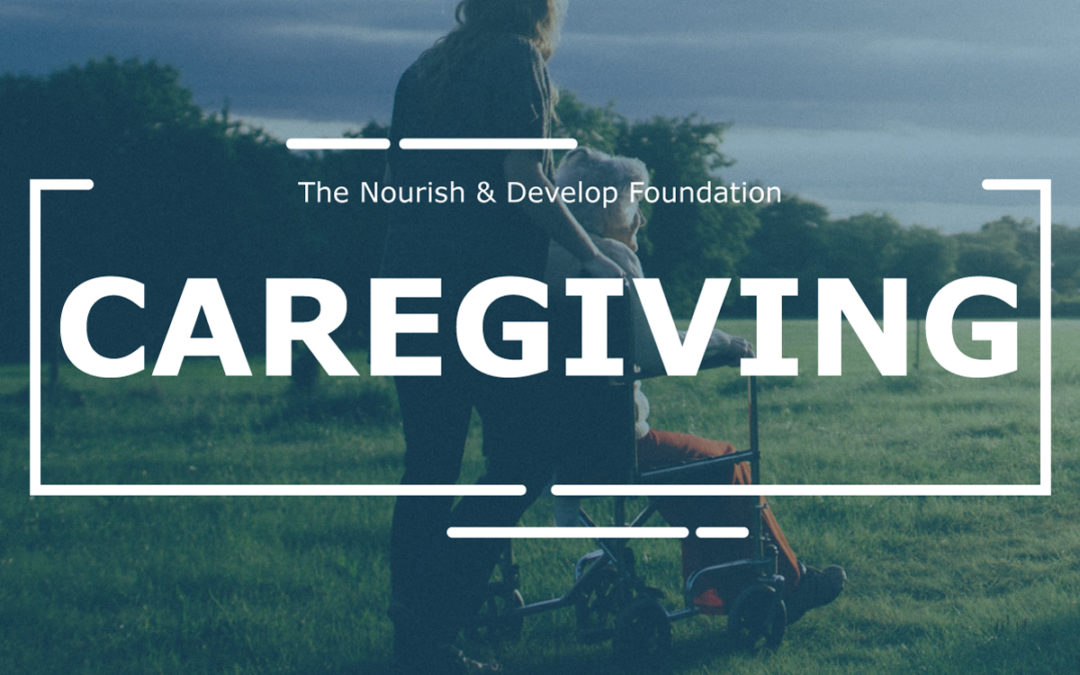Did you know? In 2018, 1 in 4 Canadians provided care to someone
with a health condition, a disability, or problem related to aging. Caregivers are those who provide care to people who need some degree of ongoing assistance with everyday tasks on a regular or daily basis. They can be paid or unpaid. The recipients of their care may be a child, adult, or senior; a family member, friend, or patient; someone who is sick, disabled, or has a mental illness. The role of a caregiver can be both demanding and rewarding. Having a relationship with someone who is dependent on you brings a level of intimacy and unique bond due to the vulnerability involved to effectively care for them. Caregivers are susceptible to stress and burnout from the physical and emotional impact of the support they give. This week we hope to offer a glimpse into the caregiving experience and to promote ways to incorporate a more balanced lifestyle.
Did you know? Caregiving in Canada costs 1.3 billion dollars in productivity annually due to lost work time by caregivers.
Types of Care
Caregiving comes in many forms, and the best way to learn the type of the support the person needs is to ask them. “Is there anything I do that makes it feel worse, if so, what?” “What things help you to feel better?” “What type of care do you need?” Three we will mention today are:
Personal care includes activities like bathing, dressing, feeding, turning, repositioning, and mobility support through the use of transfer aids.
Tip: Learning all that you can about the condition or illness you are caring for can make you aware of triggers or warning signs. For example, knowing the side effects of medications can be helpful if there is a change in someone’s behaviour or health, as you may be able to identify whether it is a regular side effect or potential problem.
Emotional care includes activities like companionship, active listening, empathy, validation, showing interest, and highlighting strengths.
Tip: Much of the caregiving experience requires a level of seriousness and mundane tasks. Create opportunities for fun and laughter. They say laughter is the best medicine for a reason. Watch a comedy together, play a game, sing and dance!
Practical care includes activities like transportation and accompaniment to appointments, grocery shopping, bill paying, cleaning, and laundry.
Tip: It doesn’t hurt to make formal arrangements for Powers of Attorney, wills, and authorization for who can make healthcare decisions should something happen. Dedicating up to a couple hours of time now could save a headache and potential delays down the road.
Did you know? 1 In 3 unpaid caregivers in Canada are distressed.
Stress and Burnout
Common signs of stress:
- Feeling anxious, depressed, and irritable
- Having trouble concentrating
- Increasing consumption of eating, drinking, or smoking
- Neglecting responsibilities
- Overreacting to minor nuisances
- Difficulty sleeping
- Withdrawing from leisurely activities
- Feeling tired and fatigued
- Experiencing new or worsening health problems
- Becoming progressively resentful
Common signs of caregiver burnout:
- Neglecting personal needs
- Having trouble relaxing despite available resting opportunities
- Feeling helpless and hopeless
- Becoming increasingly impatient and irritable with person receiving care
- Reduction in baseline energy levels
- Experiencing exhaustion regardless of sleeping or taking a break
- Susceptibility to colds and viruses
- Receiving little satisfaction from caregiving even when it is the primary activity
- Getting urges to self-harm or harm the care recipient
- Fluctuation in sleep patterns, and appetite or weight gain
Preventing/Managing Stress and Burnout
It isn’t always easy to put yourself first, but adjusting your perspective, feeling appreciated, asking for help, and taking breaks are essential for your physical and mental health.
Prioritize your health: Do not skip regular check-ups or appointments. Some of the biggest challenges can be to exercise and to eat nutritiously due to time constraints, so start with small goals. Maybe it is having a bag of nuts on hand for when you are busy and need an energy boost or walking to the mailbox instead of driving. Such practices can become habit when repeated often enough, and the impact it has on you will influence your motivation to do more of it.
Set boundaries: To ensure you do not bite off more than you can chew, make it clear from the get-go what you can and can not help with, and don’t be afraid to remind them if they begin to request activities beyond what has been laid out. If they require more support than you can give, offer to help them research services that will meet their needs.
Look into additional supports: Are there existing community services that can lighten the load for you? A hot meal delivery, respite care, or telephone check-ins are examples of programs that may be available to help.Please contact us for referrals to organizations like Community Care and Community Living.
Say yes to help: Caregiving should never be up to one person, as it takes a village. If someone wants to help, don’t be shy to accept. Supporting you likely makes them feel good as well. Consider having a small list of tasks on hand that could be delegated to someone in case someone is available.
Connect with caregiver resources: Allow yourself to receive care from others. Talking to someone, seeking advice, or being able to relate to people who are in similar situations can provide relief and social connection. See some supports offered by Ontario Caregiver Association below:
Resources
Canada Caregiving Benefits and Leave
Ontario Caregiver Organization
Ontario Health and Wellness: For Family and Other Caregivers
Ontario Shores Family and Caregiver Resources
Sources
https://www150.statcan.gc.ca/n1/daily-quotidien/200108/dq200108a-eng.htm
https://www.mhanational.org/being-effective-caregiver
https://www.helpguide.org/articles/stress/caregiver-stress-and-burnout.htm



